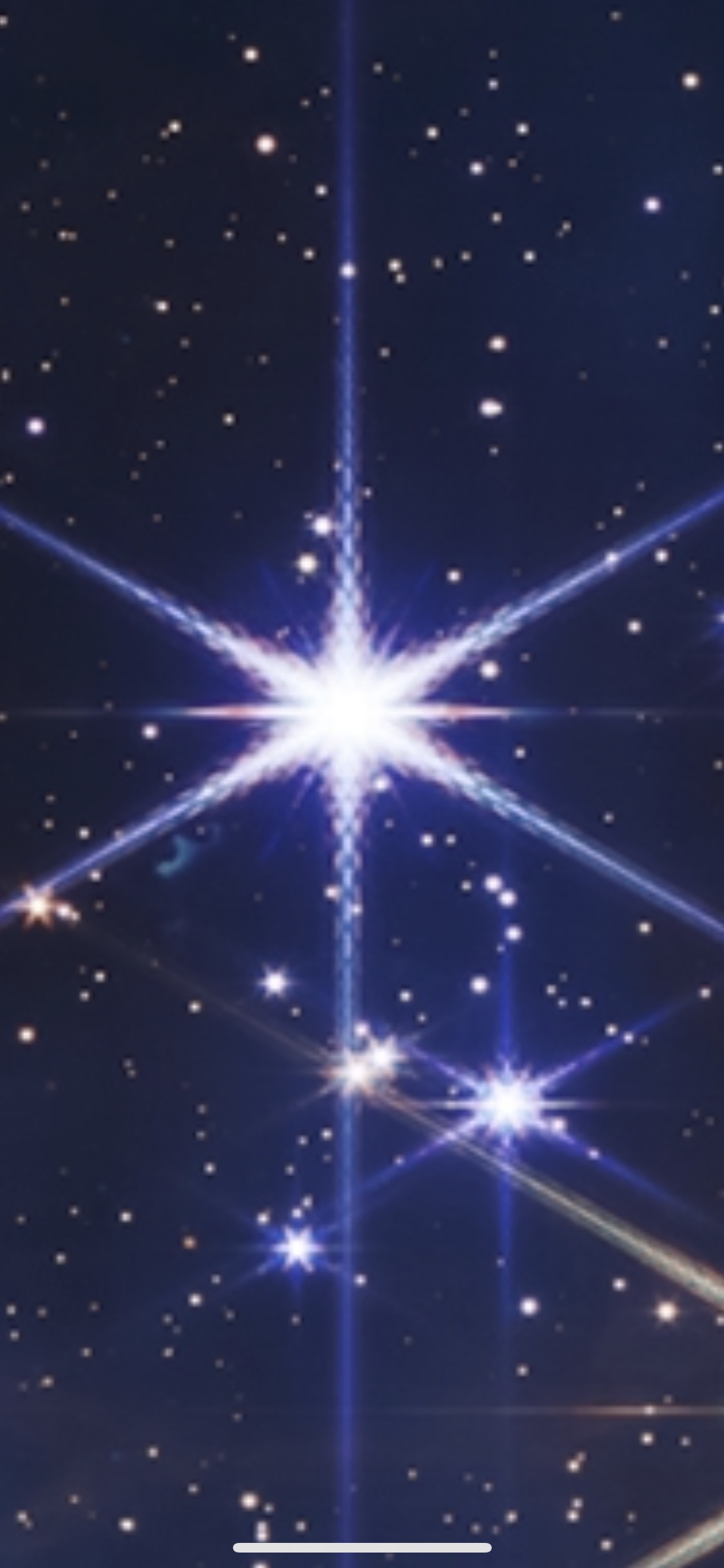JWST: On July 12, we'll see the universe like never before
Glenn Newell
The photos that will be released were chosen for their spectacular color imagery, NASA said
Wednesday, as well as to demonstrate the breadth of science that the JWST is supporting.
"We're only beginning to understand what Webb can and will do," Nelson said. "It's going to explore objects in the solar system and atmospheres of exoplanets orbiting other stars -- giving us clues as to whether their atmospheres are similar to our own. It may answer some questions that we have. Where do we come from? What more is out there? Who are we?"
Each image released next month will reveal different aspects of the infrared universe in unprecedented detail and sensitivity, scientists said Wednesday during a news conference.
Along with the deepest infrared view of the cosmos to date, the images also will show how galaxies interact and grow. Webb can reveal, for example, how cataclysmic collisions drive the process of star formation, with new, young stars emerging from their natal cloud of gas and dust. The telescope's images could also show dying stars seeding the galaxy with new elements and new dust that may one day become part of new planetary systems.
The images released on July 12 also will include the first spectrum of an exoplanet. NASA has confirmed the existence of more than 5,000 planets beyond our solar system, and looking at the vibrational spectrum of one could help us understand what molecules exist in its atmosphere -- and whether the exoplanet could potentially support life.
...
Bruce Braunstein
--
You received this message because you are subscribed to the Google Groups "SJAA AstroImaging" group.
To unsubscribe from this group and stop receiving emails from it, send an email to sjaa-astroimag...@googlegroups.com.
To view this discussion on the web visit https://groups.google.com/d/msgid/sjaa-astroimaging/CACdhie0K6R%3DtYEaW3KZsuq12LH0%3DPfYHYAPwioogR0N6cx2eGw%40mail.gmail.com.
Gary Hethcoat
To view this discussion on the web visit https://groups.google.com/d/msgid/sjaa-astroimaging/CAHGqHN-WKH6VLkFn2qZSTHmFDejkdthiFt64yYVj%2BGcARqt3RQ%40mail.gmail.com.
Gary Hethcoat
Nikola Nikolov
To view this discussion on the web visit https://groups.google.com/d/msgid/sjaa-astroimaging/CABFcML%3DixaYDJSaP0SxE-YDctbgaM6dXS1ay914S3y4vGmVYDA%40mail.gmail.com.
Paolo Barettoni
ian clements
On Jul 3, 2022, at 13:57, Paolo Barettoni <paolo.b...@gmail.com> wrote:
Of course Nikola, You are right about the monochrome images, but I suspect that Nasa will come out with some sort of false coloring, just to appeal the wide public and increase the WOW factor...
To view this discussion on the web visit https://groups.google.com/d/msgid/sjaa-astroimaging/1be564b7-3fef-46e6-bc0d-06392a73de8fn%40googlegroups.com.
Glenn Newell
To view this discussion on the web visit https://groups.google.com/d/msgid/sjaa-astroimaging/D712FD6A-1476-4E2A-BCF8-530133A5141E%40gmail.com.
Gary Hethcoat
To view this discussion on the web visit https://groups.google.com/d/msgid/sjaa-astroimaging/CACdhie1HLoUH0Cq2cCALRbHa2h6EACY8QuVJqRKr5fhyZ9Dhig%40mail.gmail.com.
Paolo Barettoni
Paolo Barettoni
Glenn Newell
To view this discussion on the web visit https://groups.google.com/d/msgid/sjaa-astroimaging/ad65a3a9-67f3-4c22-b7dc-7dcbb595d605n%40googlegroups.com.
Glenn Newell
Glenn Newell
Hitesh Dholakia
To view this discussion on the web visit https://groups.google.com/d/msgid/sjaa-astroimaging/CACdhie0crvChZadNa3DdXctp0ZqRa2UYRhLk6J8q6y86a9%2BFUQ%40mail.gmail.com.
Gary Hethcoat

To view this discussion on the web visit https://groups.google.com/d/msgid/sjaa-astroimaging/CAL6G5fqS%3DZg8vUjeCXrdZ6mBfPuc6dRWBkQ0UFkKovr443ncsA%40mail.gmail.com.
Karen Bieber
To view this discussion on the web visit https://groups.google.com/d/msgid/sjaa-astroimaging/CAL6G5fqS%3DZg8vUjeCXrdZ6mBfPuc6dRWBkQ0UFkKovr443ncsA%40mail.gmail.com.
rob pfile
https://www.youtube.com/watch?v=VWjbGHb2ZC4
they specifically chose a foreground galaxy with a lot of mass to image the far-redshifted galaxies behind it being lensed. i don’t think the hubble deep field was looking for a lensing situation.
rob
rob pfile
https://jwst-docs.stsci.edu/jwst-near-infrared-imager-and-slitless-spectrograph
they give the image scale as 0.065app, so maybe they drizzled this image.
or maybe i’m looking at the wrong instrument…?
rob
> On Jul 11, 2022, at 4:11 PM, Gary Hethcoat <gary.h...@gmail.com> wrote:
>
> OMG, what the heck is going on HERE???
>
Gary Hethcoat
To view this discussion on the web visit https://groups.google.com/d/msgid/sjaa-astroimaging/20E1D313-0ABA-4B42-8A3B-377408EA2EDC%40gmail.com.
Glenn Newell
To view this discussion on the web visit https://groups.google.com/d/msgid/sjaa-astroimaging/CABFcML%3DuxfaeJCCgOXFb4JxN5%2B2EuY7%2BCY7s4CqtKXwCD7fXTQ%40mail.gmail.com.
Rajah
To view this discussion on the web visit https://groups.google.com/d/msgid/sjaa-astroimaging/CABFcML%3DuxfaeJCCgOXFb4JxN5%2B2EuY7%2BCY7s4CqtKXwCD7fXTQ%40mail.gmail.com.
Swaroop Shere
To view this discussion on the web visit https://groups.google.com/d/msgid/sjaa-astroimaging/CAGwcBaJ%3Dk_uwK-Dq5UaKzhydbuTRgQMZXPFHQ08vTDyffzRuvw%40mail.gmail.com.
--
Rajah
To view this discussion on the web visit https://groups.google.com/d/msgid/sjaa-astroimaging/CAOdaDS65kR5AkgwTBgJkHZkPPib2-w%3D2Gw_4%2BSaJjNxocTancQ%40mail.gmail.com.
Gary Hethcoat
To view this discussion on the web visit https://groups.google.com/d/msgid/sjaa-astroimaging/CAGwcBaLRBkNody%3DySk0OnuDY%2BoZ5C_pQNzvyGWDFj9sxXoUB0A%40mail.gmail.com.
Richard Thornton Senegor




To view this discussion on the web visit https://groups.google.com/d/msgid/sjaa-astroimaging/CABFcMLk0adk-PA86BLsJXrbWOMV075GWnYRSMuHr6RktBZWCGQ%40mail.gmail.com.
Carl-Erik Svensson

To view this discussion on the web visit https://groups.google.com/d/msgid/sjaa-astroimaging/CAAzxuy_mYVvs8x-PK889J2E30d1GuhmJirMtb60tfdojb4xMiw%40mail.gmail.com.
Carl
Hy Murveit
To view this discussion on the web visit https://groups.google.com/d/msgid/sjaa-astroimaging/CANEDzNpdEdiOZUzE__9dcFR-Noe0%3DsyyyB9vZTq%2BpgPZ%2BT1j9A%40mail.gmail.com.
Richard Thornton Senegor
If you're familiar with Fourier transforms, the light diffracting around the vane creates a high frequency zone in image space, which manifests as the sharp spikes. The shape of the vane and the shape of the mirror influences the shape of the spikes. In JWST's case, it has a triangular vane and hexangonal mirror. Each of those lines/points diffracts light differently. So instead of the cross you get with Hubble, you end up with 8 points for JWST: 6 from the hexagonal primary mirrors and 6 from the vanes (but 4 of the 6 overlap, so you only get 2 new ones).
Here's a neat infographic from the JWST team: https://stsci-opo.org/STScI-01G6933BG2JKATWE1MGT1TCPJ9.png
To view this discussion on the web visit https://groups.google.com/d/msgid/sjaa-astroimaging/CA%2BB1P8uZFyyoTPHy%3D%2BZ6A9Qb6ZhWWwDJwXN6n05sat%3DxLUov7Q%40mail.gmail.com.
Glenn Newell
To view this discussion on the web visit https://groups.google.com/d/msgid/sjaa-astroimaging/CAAzxuy_nB0mhF1Xkcu4_-RfeJGx0VBHWbyXaOU%2BNucE6aTyk4g%40mail.gmail.com.
Glenn Newell
Chih-hsiang Cheng
To view this discussion on the web visit https://groups.google.com/d/msgid/sjaa-astroimaging/CACdhie22of_TEaf-%3DGjb69HtSF%2BfVO0Auw0P0G%3DEcE5ScXzx7w%40mail.gmail.com.
